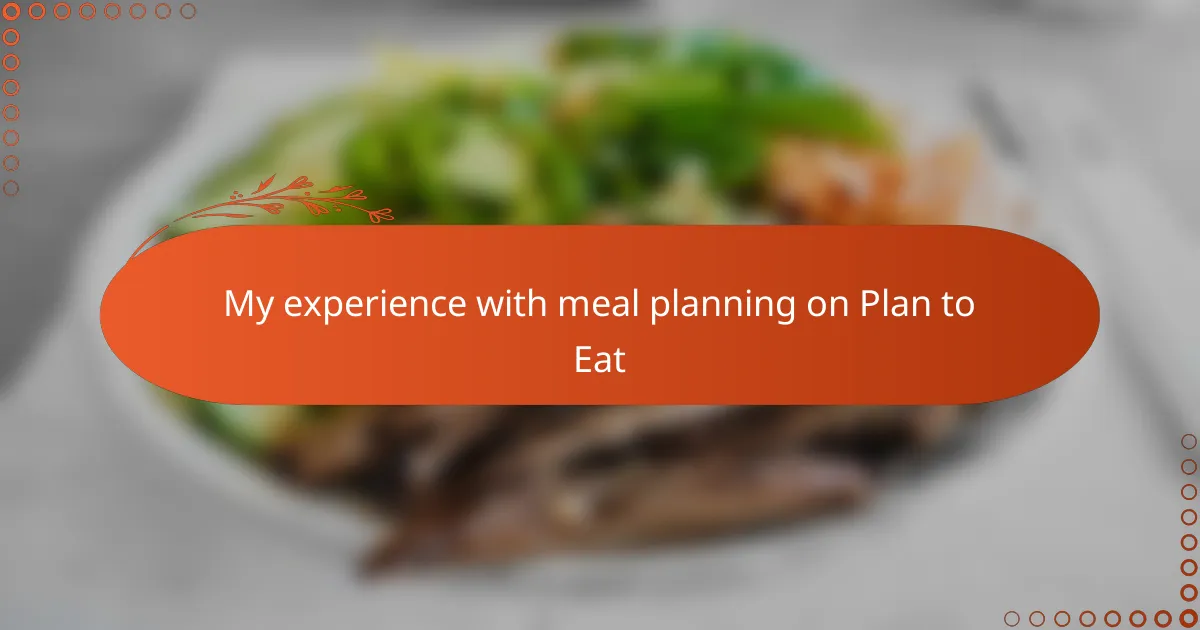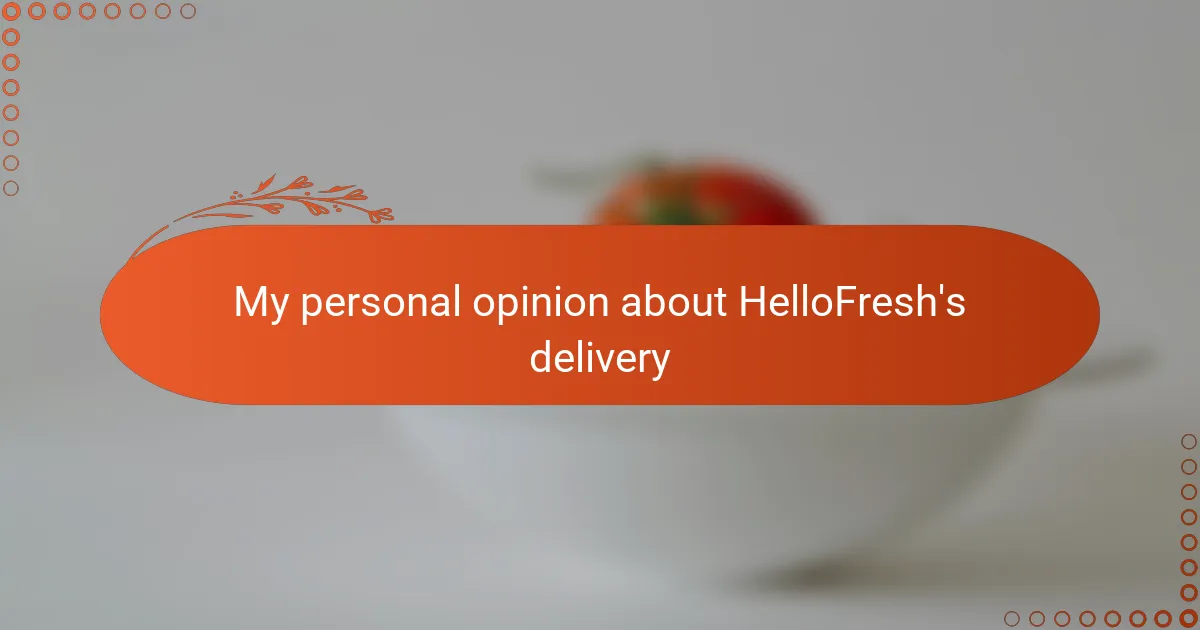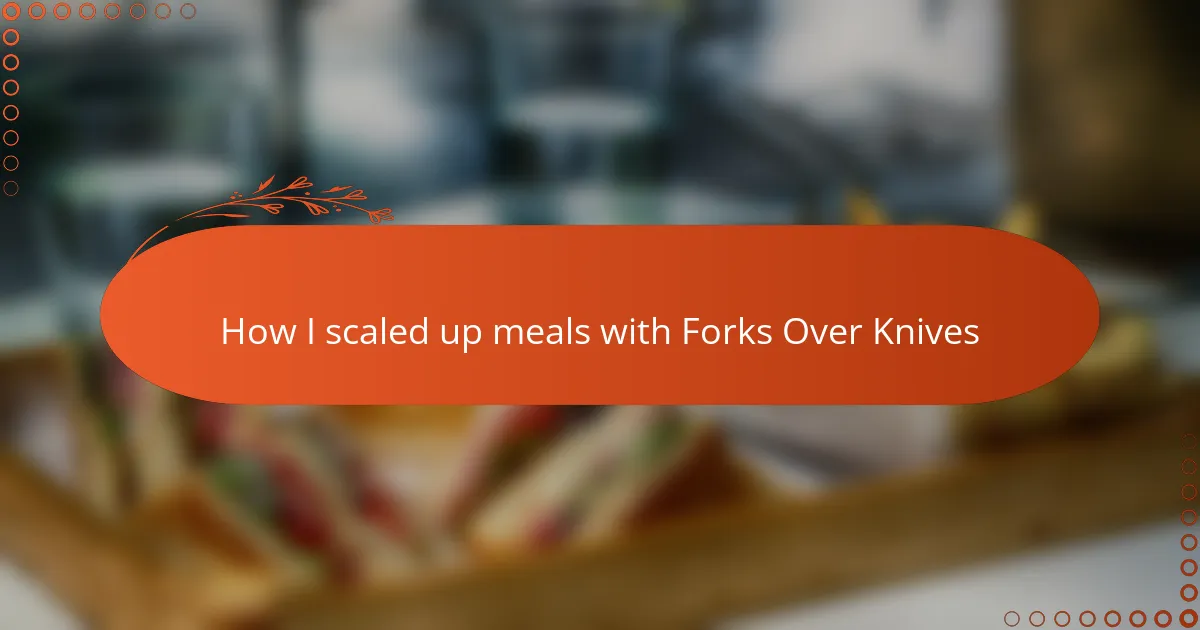Key takeaways
- Meal planning offers clarity and flexibility, transforming cooking into a more mindful and enjoyable experience.
- Tools like Plan to Eat streamline the meal planning process by organizing recipes and automatically generating grocery lists.
- Meal planning reduces food waste, saves money, and supports seasonal cooking, enhancing the connection to homestead life.
- Customization and tracking in meal planning allow for adaptability, making it easier to align with personal tastes and unexpected changes.
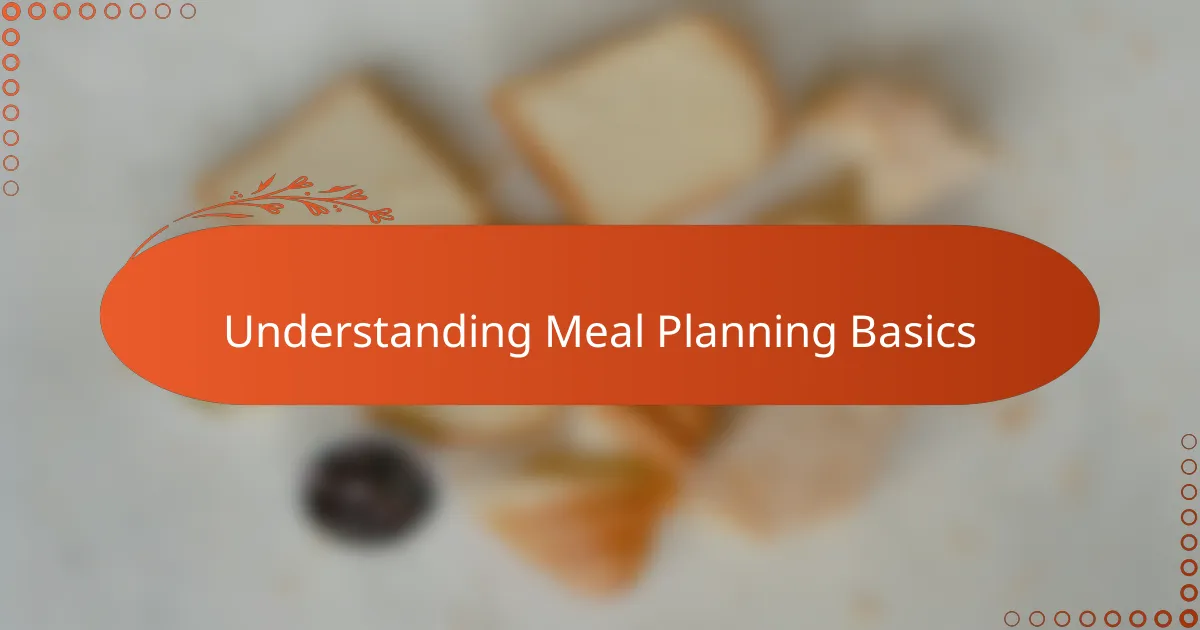
Understanding Meal Planning Basics
Meal planning, at its core, is simply organizing what you’ll eat ahead of time. When I first tried it, I underestimated how much clarity it could bring to my hectic days. Have you ever stood in front of the fridge, indecisive and frustrated? That’s exactly why understanding this basic step felt like a mini breakthrough for me.
I’ve learned that meal planning isn’t about rigid schedules or perfection. It’s about creating a flexible roadmap that guides your grocery shopping and daily cooking without stress. Knowing this made me more forgiving when plans changed or cravings struck — it’s part of the process, not a failure.
What struck me most was how meal planning naturally nudged me towards healthier choices. When you consciously decide your meals, you become more mindful of ingredients and nutrition. It’s a simple habit, but one that quietly transforms your relationship with food.
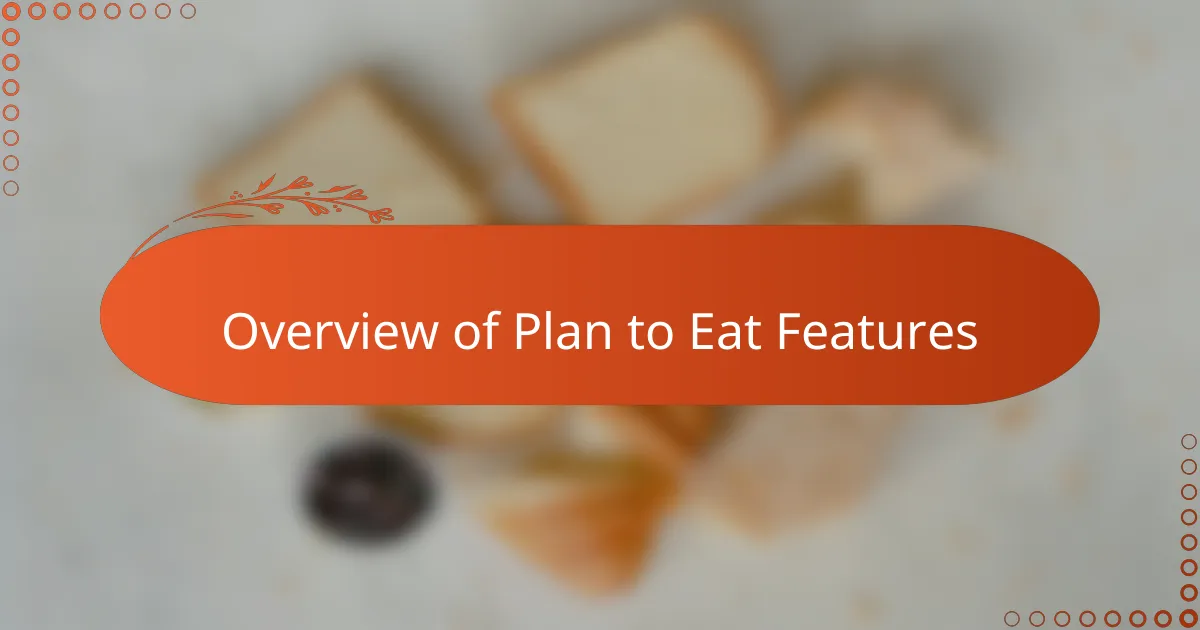
Overview of Plan to Eat Features
Plan to Eat immediately caught my attention with its intuitive dashboard that brings all your recipes, meal plans, and shopping lists into one place. I remember feeling a mix of excitement and relief the first time I imported my favorite homestead recipes—everything was neatly organized, and the drag-and-drop meal planning felt almost effortless. Have you ever wished your digital tools worked as smoothly as your favorite cast iron skillet? For me, this was exactly that kind of experience.
One feature that truly stood out was the automatic grocery list generation. Instead of scribbling down ingredients or juggling multiple apps, Plan to Eat consolidates everything based on your planned meals. It saved me countless trips to the store, and I found myself spending more time cooking and less time stressing over forgotten items in my rustic kitchen.
Another subtle yet powerful tool was the ability to customize recipes and scale portions to suit my homestead’s changing needs. Whether I was cooking for two or prepping for a larger gathering, this flexibility made me feel like the software understood my lifestyle. It transformed meal planning from a chore into a creative extension of my cooking rhythm.
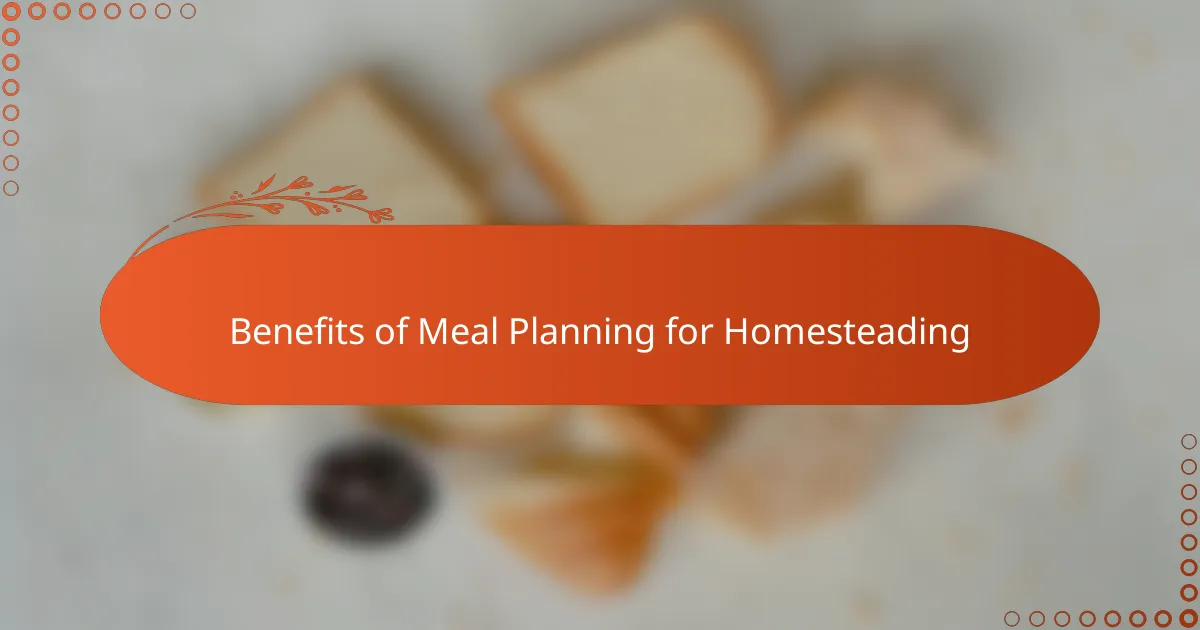
Benefits of Meal Planning for Homesteading
When I first started meal planning on the homestead, I quickly realized how it helped me reduce food waste. Have you ever thrown out spoiled vegetables or forgotten leftovers? By having a clear plan, I used ingredients more efficiently, which not only saved money but also felt like I was honoring the hard work that goes into growing or sourcing our food.
Another unexpected benefit was the way meal planning brought peace to my daily routine. On busy days, knowing exactly what I’d cook took a huge mental load off my shoulders. It gave me back time and energy to focus on other homestead chores without that nagging question of “What’s for dinner?”
I also noticed how planning meals helped me embrace seasonal cooking more naturally. When I mapped out meals around what was fresh and available, I found my dishes tasted better and connected me more deeply to the rhythms of homestead life. It turned cooking into a rewarding part of living simply and sustainably.
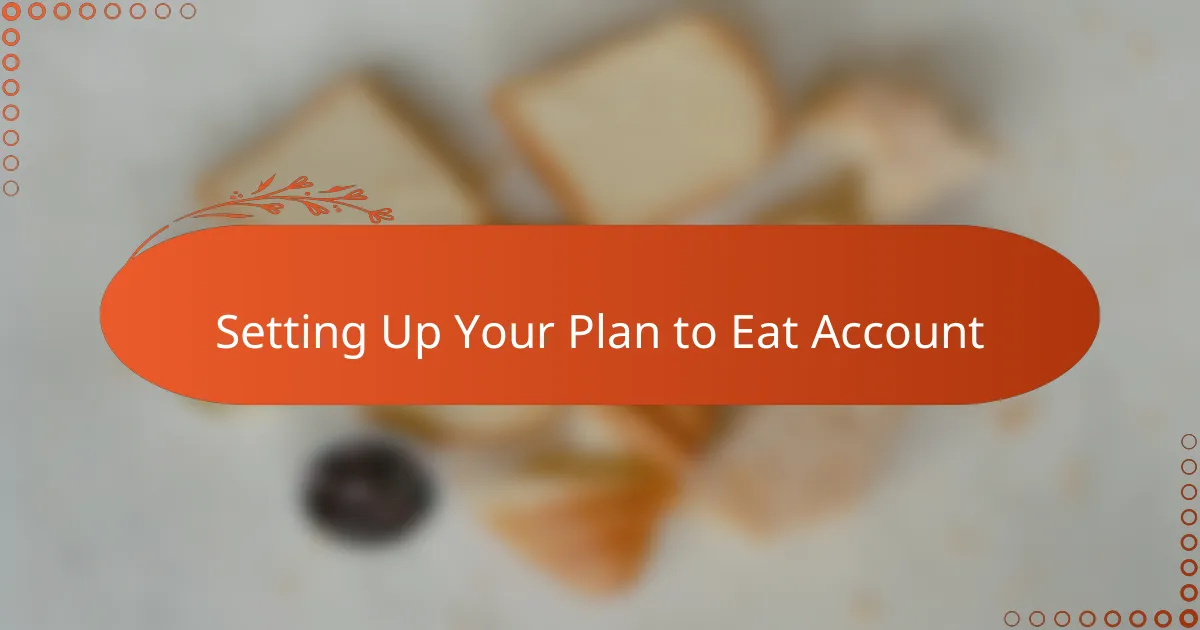
Setting Up Your Plan to Eat Account
Setting up my Plan to Eat account was surprisingly straightforward, which eased my initial apprehension. I remember signing up and immediately being prompted to import recipes or add my own — it felt like the software was inviting me into a cozy kitchen community. Have you ever felt that instant sense of possibility when starting a new project? That’s exactly how I felt here.
The profile setup asked a few simple questions about dietary preferences and household size, which made the whole experience feel personalized right away. I liked knowing that the tool would tailor suggestions to fit my homestead’s needs rather than offering generic plans. It gave me confidence that this was more than just another meal planner app.
Connecting Plan to Eat to my daily routine was surprisingly seamless. The interface welcomed me with clear navigation tips, and I loved how quickly I could start organizing meals without getting bogged down in settings. Honestly, having this easy setup process made me feel ready to take control of my meal planning journey from day one.

Customizing Recipes for Homestead Cooking
What I found most rewarding about customizing recipes on Plan to Eat was how it allowed me to adapt traditional homestead dishes to what was actually growing in my garden or what I had preserved from last season. Have you ever wished you could tweak a recipe on the fly to reflect what’s fresh or what animals are providing? This flexibility made my cooking feel more connected and immediate.
One memorable moment was when I adjusted a classic stew recipe to include home-cured bacon instead of store-bought meat. It wasn’t just a substitution—it transformed the dish into a true homestead experience. That sense of pride and personalization made meal prep feel more meaningful and less routine.
Plan to Eat’s ability to scale recipes up or down also proved invaluable. Whether I was cooking for a quiet night or hosting a casual gathering of neighbors, I could easily adjust portions without second-guessing ingredient amounts. That saved me a lot of stress and helped me maintain my homestead’s practical approach to food.
![]()
Tracking and Adjusting Meal Plans
One thing I quickly realized about tracking my meal plans on Plan to Eat was how it helped me spot patterns in what my family actually ate versus what I had initially planned. Have you ever been excited about a meal idea only to have it end up untouched? Seeing those gaps in real time made it easier to tweak future plans to match our tastes and reduce waste.
Adjusting meal plans became less of a chore and more of a learning experience. For example, when a busy week threw off my schedule, I simply dragged and dropped meals to new days without feeling guilty. That flexibility gave me the freedom to roll with unexpected changes instead of abandoning the whole plan.
What stood out most was how tracking progress motivated me to keep improving. Watching my meal plans evolve alongside what was growing in the garden—and adapting recipes accordingly—made the whole process feel dynamic and deeply connected to homestead life. It wasn’t just planning; it was creating a living, breathing rhythm for our kitchen.
